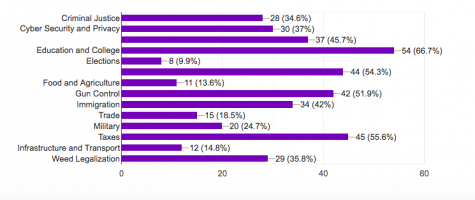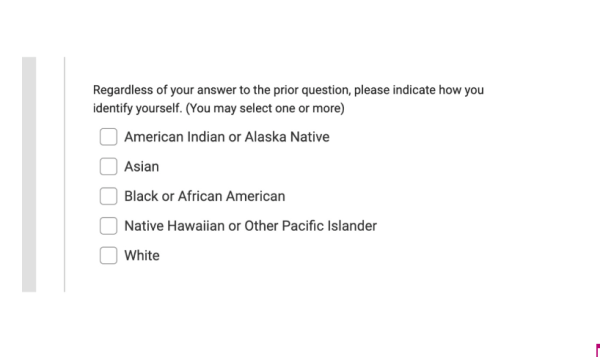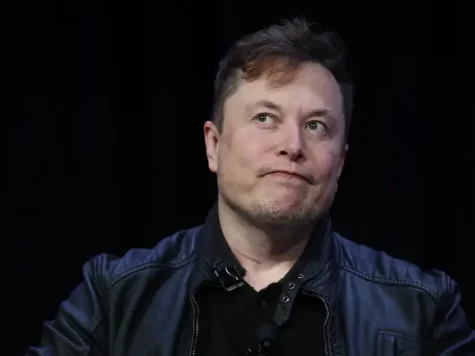What A Divided Democratic Party Means For American Youth
March 10, 2020
The 2020 Democratic primary has been one of unprecedented nature. It began with 26 presidential hopefuls, twenty of them swarming the debate stage in late June and setting off a primary race that has ultimately led to major divisions amongst a party that demands unity. Those 26 candidates have narrowed down to 2 – Joe Biden and Bernie Sanders – in an unexpected turn of events following Super Tuesday. Candidates with significant backings like Elizabeth Warren, Amy Klobuchar, Pete Buttigieg, and Michael Bloomberg, all suspended their campaigns as Biden and Sanders emerged victorious in their round up of delegates. While the party may feel more united under 2 candidates at first glance, Biden and Sanders’ ideological differences are now being experienced tenfold within the party as tensions between moderate and liberal democrats reach a boiling point.
It would be an understatement to say that Democrats have not been pleased with the last four years under the Trump administration. From the party’s significant efforts to push through Trump’s impeachment, to their passionate displays on the debate stage, it’s clear to see that Democrats have a common goal: to beat Donald Trump. Thus, the matter of electability becomes extremely important as the vast progressive agenda Sanders advocates for may not garner enough support from the moderate Republicans required to beat Trump.
Former President Obama has expressed the necessity of consensus within the party, refraining from endorsing a single candidate, but instead stressing the importance of “a strong, united, and well-organized [Democratic National Committee] ready to spring into action the moment the general election starts — a DNC that’s ready to lift us all to victory in November”. Bloomberg expressed the same sentiments in his concession speech before endorsing Joe Biden, saying, “I am cleareyed about our overriding objective, and that is victory in November. I will not be our party’s nominee, but I will not walk away from the most important political fight of my life.”
Klobuchar and Buttigieg have similarly endorsed Biden in a move that turned the tides on Sanders’ lead in less than a week. As for now, Biden has 664 delegates and Sanders is close behind with 573, but the question of who will win the 1991 delegates required to secure the nomination is still up in the air.
Prior to Super Tuesday, when there were 7 candidates remaining, Cresskill students were polled on who they would vote for and what issues were most important to them, and the results were as follows:


Support in CHS for Sanders and Biden is representative of the national support that allowed those two candidates to become frontrunners. They may both be Democrats, but their stances on the top issues polled – College, Taxes, and Climate Change – outline two very different paths for the future of this country.
Bernie Sanders, a Vermont Senator and politician since 1991, identifies as a Democratic Socialist. Tweeting in early September that “Billionaires should not exist”, Sanders has positioned himself as a champion of the lower class and financially burdened millennials. He has profusely proclaimed that college should be completely free and has said that all student loan debt will be canceled. How does he expect to pay for it? Sanders has proposed a Wall Street tax which economist Robert Pollin expects will raise $2.4 trillion in 10 years, as well as a Wealth Tax on millionaires and billionaires. Many speculate that Sanders won’t stay true to his word in only taxing the rich, and that the middle class will see tax hikes to pay for his liberal agenda. His College For All plan is undoubtedly ambitious, but it represents the faction of the Democratic party that would vote for him: Left-leaning Democrats that seek radical change from the current Republican government.
As for the environmental regulations and legislation, Sanders wants to close nuclear power reactors, ban fracking, impose government regulations on carbon emissions, pay farmers to adopt climate-friendly practices, and invest in renewable energy. Amongst all the renewable energy proposals, his plan is the most aggressive and expensive, expected to cost upwards of $16.3 trillion. “The US has for over a century spewed carbon pollution emissions into the atmosphere in order to gain economic standing in the world,” Sanders told Vox. “Therefore, we have an outsized obligation to help less industrialized nations meet their targets while improving quality of life.” Sanders’ Green New Deal is about as progressive as a climate change policy can get, hoping to help workers adjust to the industry change and make the environment a leading issue in foreign policy, but he has received criticism over how he expects to garner enough bipartisan support to pass this plan.
Like Sanders, Biden proposes to pay farmers to adopt climate-friendly practices, but rather than put a cap on carbon emissions he wants to tax them. He hasn’t said much on fracking but wants to end new oil and gas leases on federal land and offshore drilling. As for nuclear power, he supports developing new nuclear technologies as part of an effort to fight climate change, a view shared by no other candidate. Biden’s plan is known as the Clean Energy Revolution and although he shares Sanders’ desire to find a way to bypass congressional support for this type of plan, the differences are much more blatant: Biden’s would be dramatically cheaper and would achieve less by 2050 than Sanders’ plan claims to. Nonetheless, both plans claim to create millions of jobs as the clean energy industry sees a prosperous boom.
As for education, Biden promotes two years of free college and the expansion of existing debt relief programs. Expected to cost $750 billion per year, his college plans fall short of Sanders but are also a lot cheaper. His plan for student debt claims that “He would guarantee that those earning less than $25,000 owe nothing on their undergraduate federal student loans, while everyone else’s payments are capped at 5% of their discretionary income above $25,000 — halving the current 10% cap”.
Under Biden, corporate tax rates would increase, but go no higher than they were in 2017. The Wealth Tax would increase as well as the Capital Gains Tax rate. However, Biden’s plans are generally much more financially moderate, making high taxes associated with a Sanders administration.
As the Rolling Stone describes Biden’s campaign, “Biden’s Democratic party views them as general starting points for negotiations with the other side in order to largely preserve the status quo and maybe, as a bonus, incrementally move the country slightly closer to generally liberal social democracy”. The pragmatic approach to policy that the Democratic party has used for decades is specifically appealing after years of legislative deadlocks and failures for the party, as it offers stability and has proven operational. However, it’s important to note the similarities between Biden’s campaign and that of Hilary Clinton, a campaign that failed to beat Trump in 2016. Sanders’ purist views are significantly more ideological than Biden’s, and paint the picture of vast progressive success and a fairer world, in a current political climate that is dominated by a failure to pass even the most moderate bills.
Rolling Stone puts it best when they write,”What Democrats cannot afford to do is delude themselves into thinking that both options represent the same future”.
As the youngest generation of educated voters, campaigns are going to be targeted to win us over. Understanding what our reality will be with either Biden or Sanders as our president is our foremost responsibility as American citizens.












